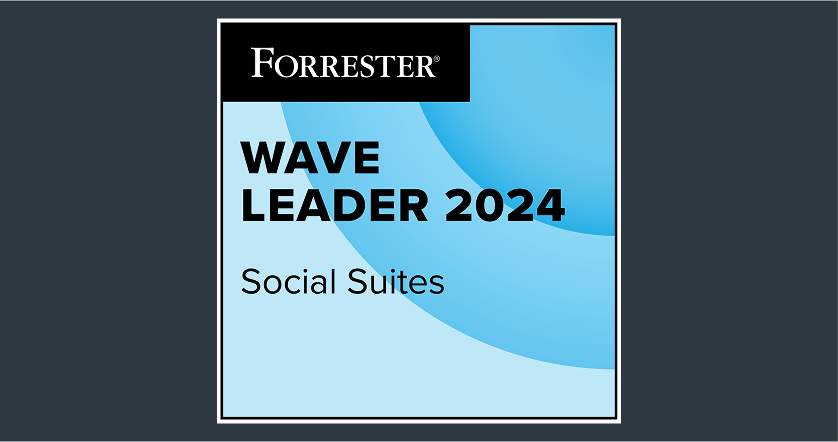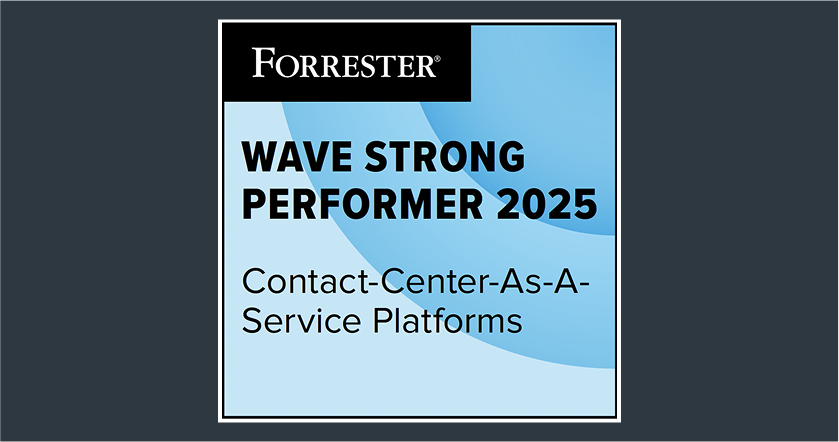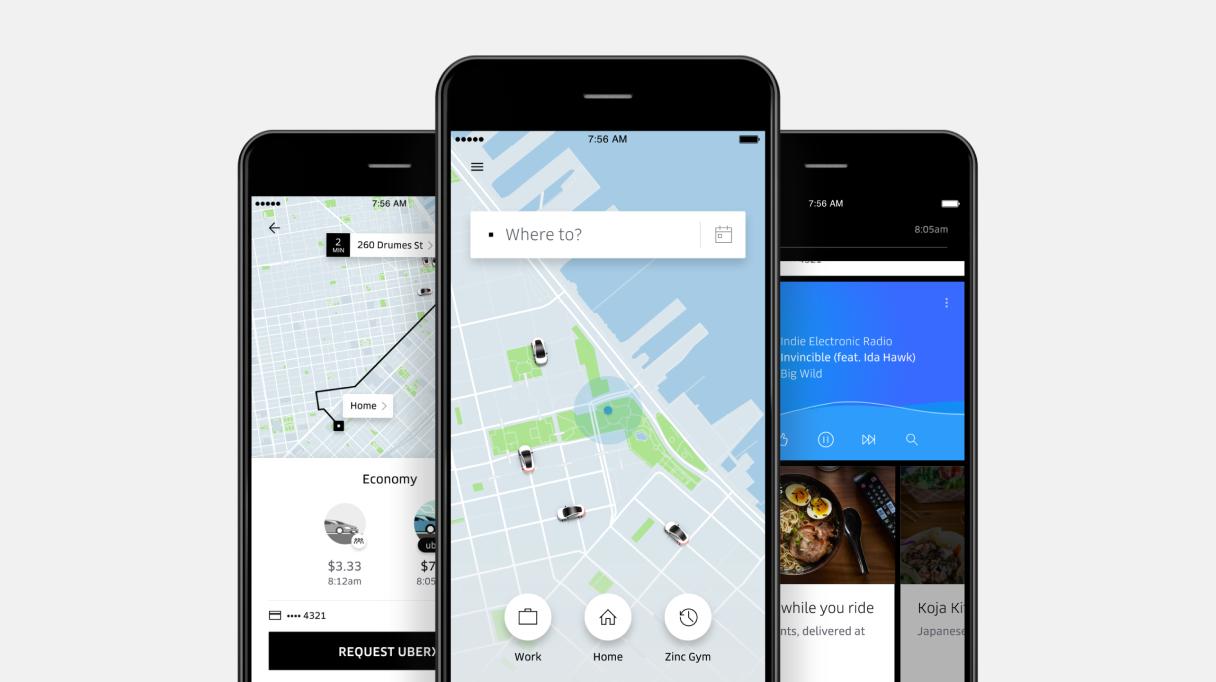What does customer-first mean?
The customer-first approach places the customer at the core of every company decision. It is about offering good customer service and aligning your business model to cater to customer needs, preferences and expectations.
Putting the customer first above everything builds trust, fosters loyalty and creates long-term relationships with your customers.
In the past, brands focused on delivering high-quality products and ensuring satisfaction post-purchase. Today, this approach is becoming more holistic. Modern companies prioritize creating seamless, personalized customer experiences that start even before the customer makes a purchase and continue well beyond.
What is a customer-first strategy?
A customer-first strategy is an approach where a business prioritizes the needs and desires of the customer at every stage of the customer journey. It is more than just solving customer problems; it's about proactively understanding customer requirements and creating solutions that improve their overall experience.
By thinking from your customers' perspective, you can identify their pain points, streamline processes and create experiences that delight them. Every department in your organization, whether marketing, product development or customer service, should align its actions with your customers' expectations.
Companies using a customer-first approach listen to feedback, anticipate trends and ensure that every customer interaction adds value. They view their customers as partners and brand advocates, building loyalty and driving sustainable growth.
3 Examples of brands putting customers first
Brands are making significant efforts to make customers feel valued these days. Let us discuss three examples of brands that follow a customer-first strategy:
Amazon: Amazon's customer-first strategy is built around convenience, personalization and anticipating customer needs. It has redefined customer expectations with innovations like Prime's fast shipping and Amazon Go's cashier-less stores.
Amazon uses data-driven insights to recommend products, offer seamless purchase options and provide excellent post-purchase support. Its commitment to listening to customers' feedback and quickly resolving issues builds trust. Amazon achieved a net promoter score (NPS) of 73 in 2022 using this customer-first approach.Zappos: Zappos's unwavering commitment to exemplary customer service is evident in its empowerment of employees to go above and beyond for every customer interaction. The brand's 'no-questions-asked' return policy and 24/7 customer support make it a leader in the customer-first era.
Zappos focuses on enhancing customer satisfaction (CSAT) over sales by empowering its employees to solve customer issues. In fact, A Zappos employee handled the company's longest customer service call, which lasted 10 hours and 43 minutes.Netflix: Netflix has built its brand reputation by understanding customers' preferences and personalizing content to match individual preferences. Its algorithm-driven, customer-first approach ensures that each user's experience feels uniquely personalized.
Netflix's recommendation engine uses viewing history, preferences and global trends to suggest personalized content for each user. According to Netflix, more than 80% of content viewed on the platform is discovered through personalized recommendations. The brand is highly responsive to feedback and keeps customers at the heart of its innovations.
Business benefits of a customer first strategy
By becoming a customer-first brand, you understand your target audience better. It helps you build products and services that your customers value. Let us discuss some more benefits:
Reduces churn rate
When customers have a positive experience with your brand, it builds brand loyalty and enhances customer retention. So, naturally, having a customer-first strategy reduces the customer churn rate.
Apple has an excellent customer retention strategy. According to a survey, loyalty to the brand stands at 93%, with customer service being the primary differentiator. Instead of outsourcing customer service to third-party vendors, Apple relies on its own stores employing trained and competent customer service representatives. As a result, Apple's customer interactions are usually positive and users stick to the brand for the distinctive experience it provides.
Enhances customer satisfaction
A customer-first marketing strategy prioritizes customers and exceeds their expectations, leading to higher satisfaction rates. If you prioritize your customers over your business goals, you will likely enhance customer satisfaction, eventually leading to business growth.
Google's search engine boasts an impressive customer satisfaction score of 80 in the US. Its customer-first approach has positioned it as a tech industry leader, with intuitive user interfaces, continuous innovation and robust customer support being key to its success.
🔖 Bookmark This: Top Techniques to Measure Customer Satisfaction [+Role of AI]
Provides a competitive edge
A customer-first approach gives you a competitive advantage by differentiating your brand from competitors. Your brand stands out in the market when you offer personalized service and care for your customers.
Did you know that Airbnb’s guest booking rate increased by 13.71% from 2022 to 2023? The brand’s customer-first strategy focuses on building trust, ensuring safety and providing personalized experiences for both hosts and guests. Features such as flexible cancellation policies, 24/7 customer support and curated experiences based on guest preferences enhance the overall user experience.
Offers detailed customer insights
A customer-first strategy helps you gather detailed consumer insights. By delivering personalized customer service, you can collect valuable data to make informed decisions, improve your offerings and create personalized experiences that better serve your customers.
How to create a customer first approach in 6 steps
Building a customer-first strategy goes beyond products and services, it’s about making customers feel understood and valued at every customer touchpoint. Let’s break down the key steps you can take to incorporate a customer-first approach in your business:
1. Segment your audience
The first step to putting your customers first is to deeply understand who they are. Begin by defining your target audience through comprehensive market research and data collection. Segment your audience based on demographics, geographic location, behavior, purchasing patterns and any other relevant characteristics. Advanced tools like Google Analytics, Facebook Audience Insights and CRM systems can help you gather data to accurately identify your customers.
However, segmentation should go beyond surface-level data points. Develop detailed buyer personas that represent the key customer segments. These personas should not only include demographics like age or job title, but also information about customer goals, pain points, motivations and purchasing behaviors. By keeping these personas updated as customer preferences evolve, you ensure that your customer-first approach remains relevant.
It’s crucial not to rely on outdated data or assumptions. Continuously gather actionable insights from customer surveys, feedback and real-time behavioral data. Avoid the trap of treating all customers the same. Effective customer segmentation allows you to cater to the specific needs of different groups, ensuring that each segment feels valued and understood.
2. Dive deep into customer needs
Anticipating and addressing customers' needs requires gathering feedback through multiple channels, such as customer support, social media or online reviews. Recognizing their evolving needs can help you adjust your products or services to serve them more effectively.
Implement structured feedback systems with well-defined metrics like net promoter score (NPS) and customer effort score (CES) to continuously gather insights. These metrics provide a snapshot of how customers feel about their experience and whether they would recommend your brand. However, don’t stop at metrics — qualitative feedback from open-ended responses, complaints and even negative reviews often holds deeper insights. These moments of dissatisfaction offer opportunities to improve and show customers you are listening and acting on their feedback.
💡 Pro Tip
Go beyond addressing immediate needs and dive deeper into understanding the emotional and psychological drivers behind customer behavior. Leverage modern conversational analytics software to analyze each interaction and unstructured data from over 30+ social and digital channels.
With conversational analytics, you can uncover the root causes behind each customer contact and pinpoint specific drivers. This provides detailed insights and actionable recommendations to address the underlying issues, empowering your team to take more informed and effective actions.
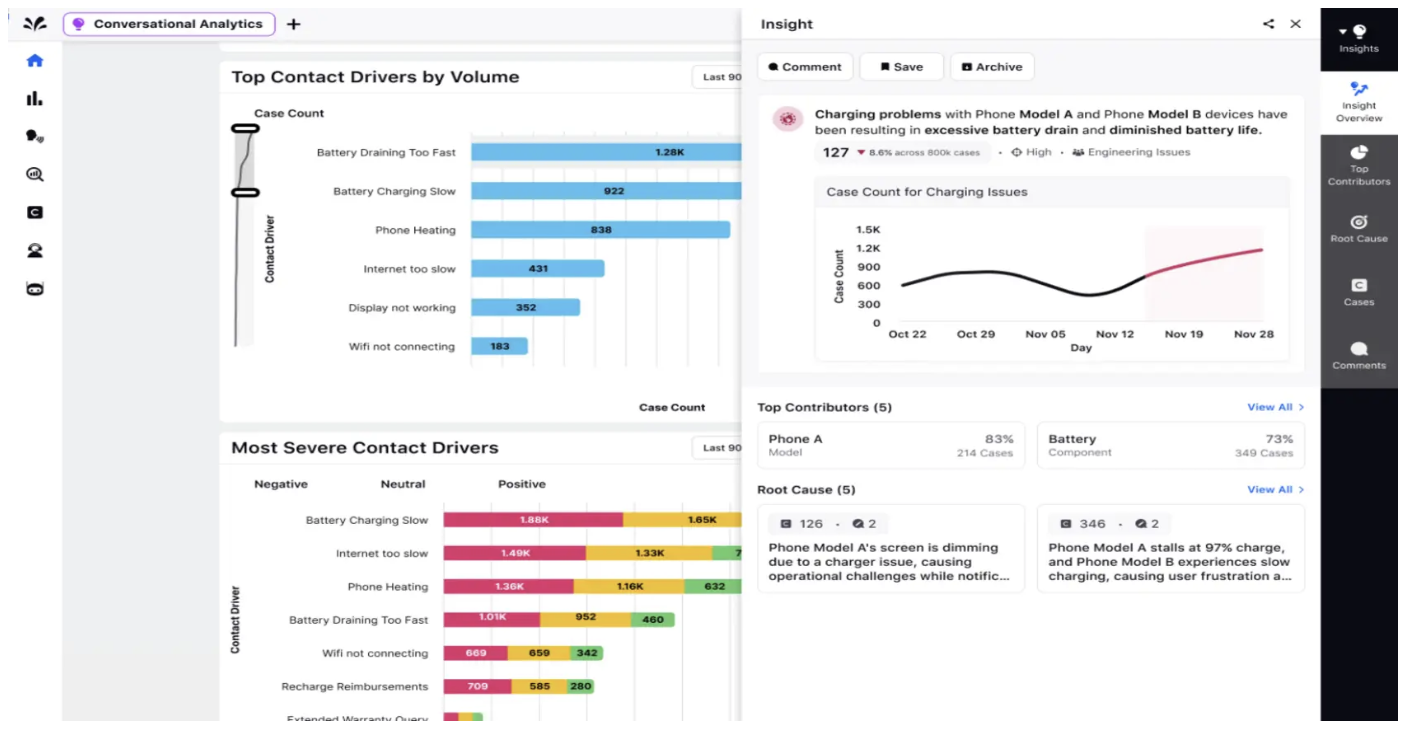
3. Develop a customer-centric mindset in your team
Creating a customer-first organization requires more than just policies — it demands a mindset shift across every department. Customer-centricity should be woven into every interaction, from marketing campaigns to product development, ensuring that each decision is made with the customer’s best interests at heart.
Start by conducting customer-focused training and workshops to help your teams internalize the value of putting customers first. These programs should include practical scenarios where employees can learn to prioritize customer outcomes, such as handling difficult situations, addressing customer feedback and exceeding expectations.
Empower your teams to take customer-positive actions without unnecessary red tape — whether that means authorizing refunds or making exceptions in customer service without managerial approval. When employees have the autonomy to make decisions that benefit the customer, it leads to faster resolutions and higher satisfaction.
Importantly, don’t silo customer service as a separate function. Every department — whether it's finance, HR or operations — should be aligned with the customer-first mentality. For instance, finance teams can simplify invoicing processes to improve the customer experience, while HR can focus on hiring individuals with customer-centric values. Eliminating bureaucratic delays and cross-departmental friction is critical to maintaining a seamless customer experience journey.
🔆 A moment to reflect
The building blocks of customer-centricity are speed, attention and accuracy. These elements define every conversation and are critical in shaping the customer’s perception of your brand.
From a customer service standpoint, consider the experience of a customer who has already spent considerable time on hold, trying to resolve an issue with a recent purchase. Finally, they reach your agent, only to be placed on hold again while the agent scrambles to pull information from multiple systems. This back-and-forth is further complicated by the need for security verifications, dragging out the conversation.
What could have been a quick and seamless resolution spirals into customer frustration and a loss of trust — all due to disconnected systems and processes. Imagine the difference if that agent had a unified agent desktop — where all customer data, purchase history and security information were readily accessible. The issue would be resolved in moments, leaving the customer not only satisfied but also impressed with the speed and efficiency of the interaction.
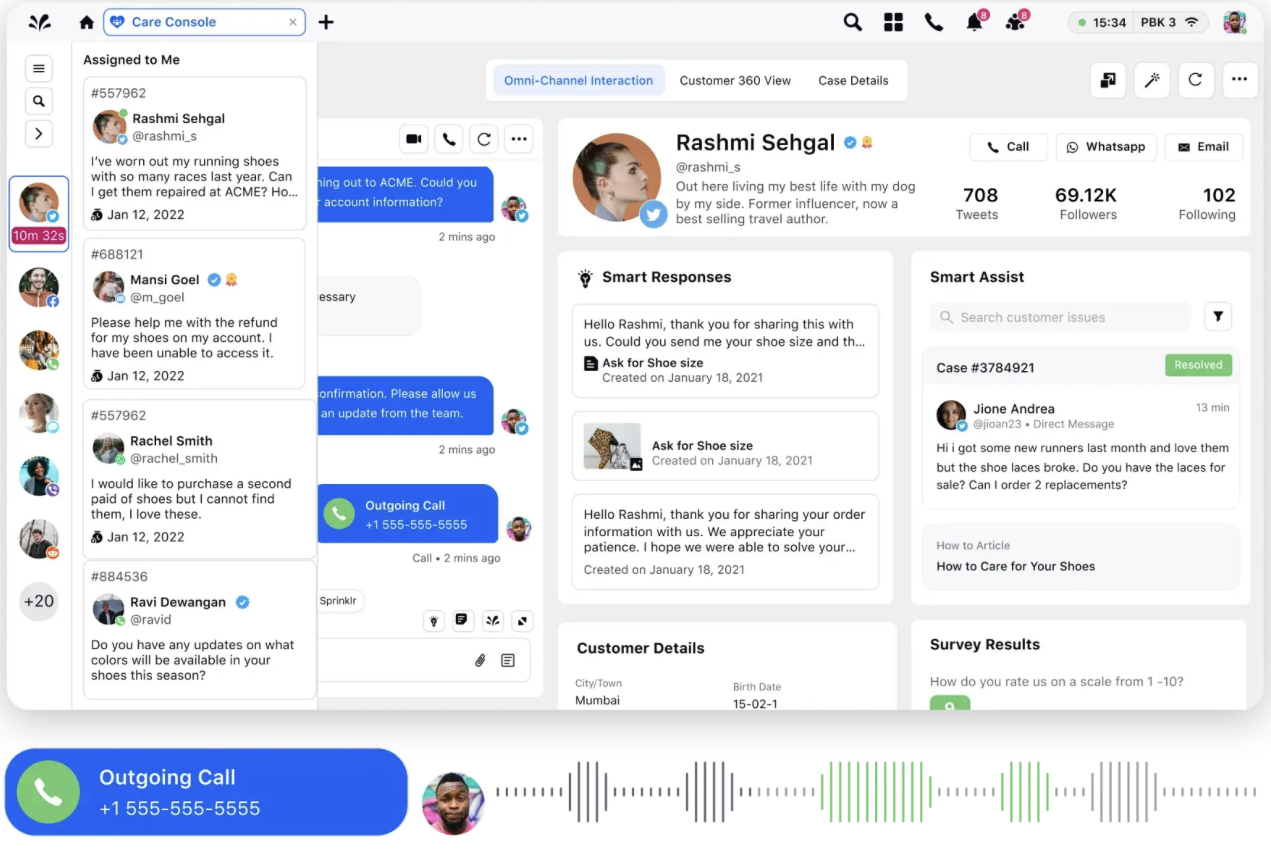
4. Enable omnichannel communication
From proactive support to transparent marketing messages, your customers should be able to reach you through any channel, at any time. Whether it's via phone, email, live chat or social media, the goal is to make it effortless for customers to contact you and feel heard when they do.
To build trust and loyalty, stay accessible on all leading customer service channels, including social media, where customers increasingly expect real-time interactions. Also, don’t wait for issues to arise — offer proactive updates on things like shipping delays or upcoming promotions. Keeping customers informed and engaged, even when you’re not directly solving problems, is a key driver of long-term customer satisfaction.
💡A small touch with a big impact
While omnichannel communication is now a standard, personalization within these channels creates meaningful customer connections. Something as simple as addressing a customer by name before they even say "hello" can leave a lasting impression, making each interaction feel tailored and human.
Additionally, offer your customers the flexibility to switch between communication channels without skipping a beat. Omnichannel routing is invaluable in complex customer service scenarios, allowing customers to start, pause and resume conversations across platforms while providing your agents with the full context of previous interactions. This ensures that agents focus on understanding and resolving customers' needs while minimizing friction in the process.
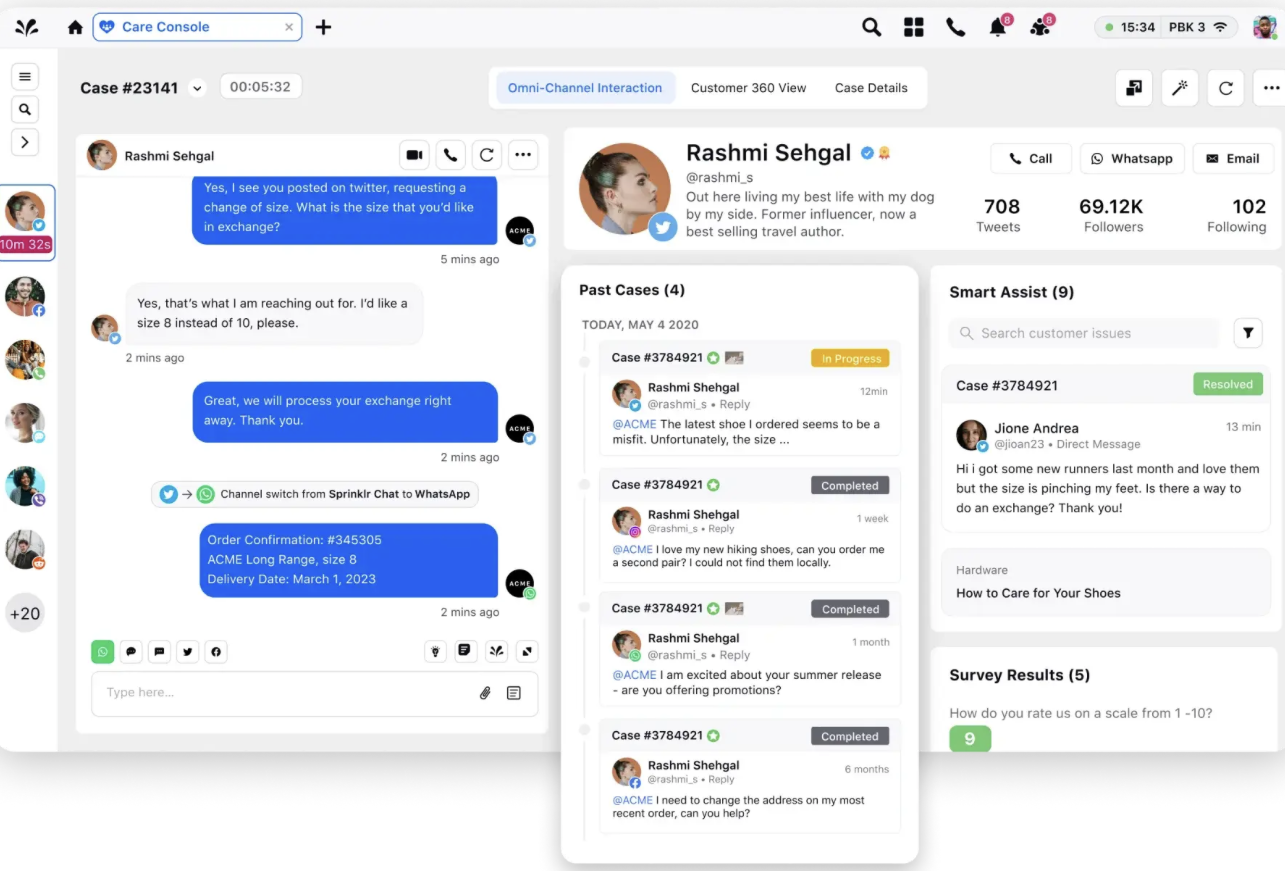
5. Analyze customer experiences for personalization
Once you’ve established communication channels, regularly map the customer journey. How easily can customers find the information they are looking for? Is the buying process seamless? Every customer touchpoint matters and small improvements can make a big difference in overall satisfaction.
Also, modern customers seek personalized experiences. Personalization is key to making customers feel valued and understood, from tailored marketing emails to custom product recommendations. Utilize your gathered data to create unique experiences for different customer segments at each stage.
Don’t rely only on sales metrics. A successful sale doesn’t mean a great experience. Dig deeper into how customers feel throughout their journey, from discovery to purchase.
✅ Pro Tip
Use customer experience mapping to identify the key stages of your customer’s experience. Regularly revisit and refine these maps to ensure you’re not missing improvement opportunities.
6. Empower your customers
Let customers control their experience. Whether you’re offering customer self-service options or allowing them to customize products, empowering customers gives them a sense of control, leading to higher satisfaction and loyalty.
Implement an intuitive knowledge base that supports DIY customer onboarding, plan upgrades and easy returns. Avoid creating processes that feel restrictive or overly complex. For instance, if you're in e-commerce, reducing the number of checkout steps or clarifying your return policies can significantly enhance the customer experience. Simplification at critical touchpoints is key to keeping customers engaged and loyal.
Checklist: Is your company “customer-first” or not?
Here’s a practical 10-point checklist to help determine whether your company has embraced the customer-first mindset: If your answer to the criteria questions below is 'yes', then congratulations - you are already on your way to a true customer-first strategy. If not, we've offered actionable tips on how to change that.
Criteria | Not customer-first | What needs to change |
📊 Are decisions and strategies based on customer insights? | Decisions are based on internal goals, not customer needs. | Incorporate customer feedback into strategic decision-making. |
💼 Do you have systems in place to collect and act on customer feedback regularly? | Feedback is collected occasionally or ignored. | Create a structured system for collecting and acting on feedback regularly. Read customer feedback management |
💪 Are your employees empowered to solve customer issues on the spot without escalation? | Employees need managerial approval for customer resolutions. | Train and empower employees to resolve issues autonomously. |
🕗 Does your company personalize customer interactions based on past behaviors or preferences? | Customer interactions are generic and non-specific. | Use data-driven insights to tailor interactions to individual customers. |
📨 Do you reach out to customers before they even ask for support? | Customer service is reactive, addressing issues after complaints. | Anticipate customer needs to offer proactive customer service. |
📧 Is your communication with customers transparent and timely? | Responses to customers are delayed or unclear. | Improve communication channels to be transparent, timely and focused on solving customer problems. |
🏢 Do all departments contribute to improving customer satisfaction? | Only the customer service team is responsible for customer satisfaction. | Encourage every department (product, marketing, sales) to prioritize customer experience. |
🔭 Are you tracking key customer experience metrics like NPS, CSAT or customer effort score (CES)? | Customer satisfaction is not tracked systematically. | Implement NPS, CSAT or CES tracking and use these metrics to drive continuous improvement. |
📌 Is the customer-first mindset a part of your company’s core values and recognized by leadership? | The enterprise mindset focuses on sales over customer satisfaction. | Promote customer focus in company values and leadership actions. |
🔍 Are you as focused on retaining existing customers as acquiring new ones? | The focus is mainly on acquiring new customers. | Develop customer retention strategies to build long-term relationships with existing customers through personalization. |
As more companies offer similar products and services, the true competitive advantage lies in how well you understand and serve your customers. This is where a customer-first strategy becomes indispensable.
Sprinklr Service offers the ideal platform to operationalize your customer-first strategy. Built on the world’s only Unified-CXM platform, Sprinklr ensures that every interaction is optimized for speed, accuracy and personalization, three core pillars of customer-centricity.
Unified agent desktop ensures that your customer service agents can access all customer data and interactions from a single screen, reducing wait times and eliminating the frustration of fragmented support.
Agent assist software empowers your team with real-time AI-driven insights, suggesting solutions that can anticipate customer needs and drastically cut response times.
Omnichannel routing ensures that customers can move seamlessly across communication channels without losing the conversation’s context, enabling frictionless transitions.
Conversational analytics offers deep insights into every customer interaction, allowing you to continuously refine your customer service approach by understanding emotions, intent and common pain points.
Individually, these features tackle specific operational needs. Together, they solve the overarching problem of inconsistent service and fragmented customer experiences, which has historically driven customers away from competitors.
Don't miss out on the opportunity to turn customer-first thinking into action. Schedule a demo today and experience how Sprinklr can help you build stronger, more meaningful relationships with your customers — ensuring they choose you over any alternative, every time.
FAQ
related products
Thank you for contacting us.
A Sprinklr representative will be in touch with you shortly.
Contact us today, and we'll create a customized proposal that addresses your unique business needs.
Request a Demo
Welcome Back,
No need to fill out any forms — you're all set.
